Orchestrate Subcloud Prestage Using the Horizon Dashboard¶
This section describes the prestage strategy for a single subcloud, all subclouds or a specific subcloud group using the Horizon Web Interface. If a CLI is preferred, see Orchestrate Subcloud Prestage Using the CLI.
Prerequisites
There are two types of subcloud prestage:
Prestage for software deployment occurs when the subcloud is running an older software than the system controller during prestaging. This prestage transfers software update(s) and container images to the subcloud while preparing for new software deployment. The prestaged data is stored in various locations on the subcloud. For example, metadata is stored in
/opt/software/<sw-version>and new images are added to the local docker registry.Prestage for install occurs when the subcloud is running the same or older software than the system controller during prestaging. This prestage transfers the entire platform software and container images of the specified release while preparing for the subcloud redeployment. This is used if the subcloud needs to be reinstalled and restored to a specific release. The prestaged data is stored in the subcloud persistent filesystem
/opt/platform-backup/<sw-version>.
For more information on prerequisites for prestage upgrade and reinstall, see Prestage a Subcloud.
Note
Any existing strategy must be deleted first as only one type of strategy can exist at a time.
Procedure
Select the SystemController region.
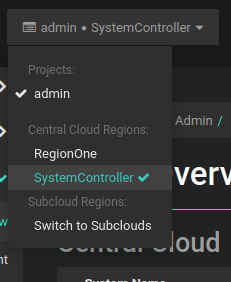
Select Distributed Cloud Admin > Orchestration.
On the Orchestration page, select the Strategy tab.
Create a prestage strategy.
On the Strategy tab, click Create Strategy. In the Create Strategy dialog box, select the Prestage strategy type and adjust the settings as needed.
Prestage strategy can be created for a single subcloud, all subclouds, or a specific subcloud group.
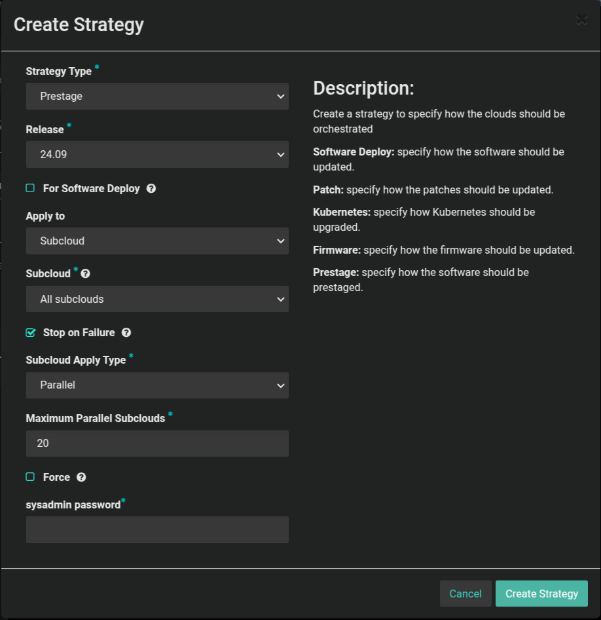
To create a prestage strategy for a specific subcloud, in the Apply to dialog box select Subcloud and in Subcloud dialog box select the subcloud to apply the strategy.
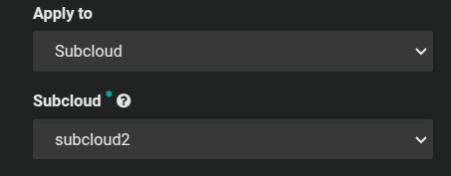
To create a prestage strategy for all subclouds, in the Subcloud dialog box select All Subclouds.
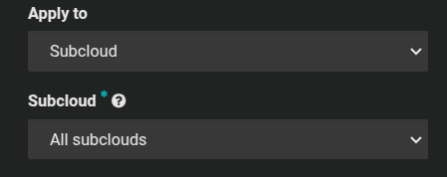
To create a prestage strategy for a specific subcloud group, in the Apply to dialog box select Subcloud Group and in the Subcloud Group dialog box choose the Subcloud Group to apply the strategy.
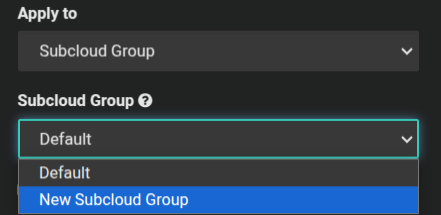
- Strategy Type
Prestage.
- Release
Release ID.
This option is available when Strategy Type is set to Prestage.
- For Software Deploy
Default: False.
Prestage for software deploy operations. If not specified, prestaging is targeted towards full installation.
- Apply to
Subcloud or Subcloud Group.
- Subcloud
Select the subcloud name or All Subclouds.
- Subcloud Group
Select the subcloud group. Available only if you select the Apply to: Subcloud Group option.
- Stop on Failure
Default: True.
Determines whether update orchestration failure for a subcloud prevents application to subsequent subclouds.
- Subcloud Apply Type
Default: Parallel.
This option is available when Subcloud is set to All Subclouds.
Parallel or Serial. Determines whether the subclouds are updated in parallel or serially.
- Maximum Parallel Subclouds
Default: 20.
This option is available when Subcloud is set to All Subclouds.
Defines the maximum number of subclouds that the prestage strategy can process simultaneously. If the Apply to: Subcloud Group option is selected, it will use the
max_parallel_subcloudsvalue of the subcloud group instead.- Force
Default: False.
Skip checking the subcloud for management affecting alarms.
- Syadmin Password
Sysadmin Password.
Note
Unlike other types of orchestration, prestage orchestration requires sysadmin password as all communications with the subclouds are done using ansible over the oam network to avoid disruptions to management traffic.
Click Create Strategy to confirm the operation.
Click on Apply Strategy to start the prestaging.
The overall status of the strategy can be viewed on the Steps table.
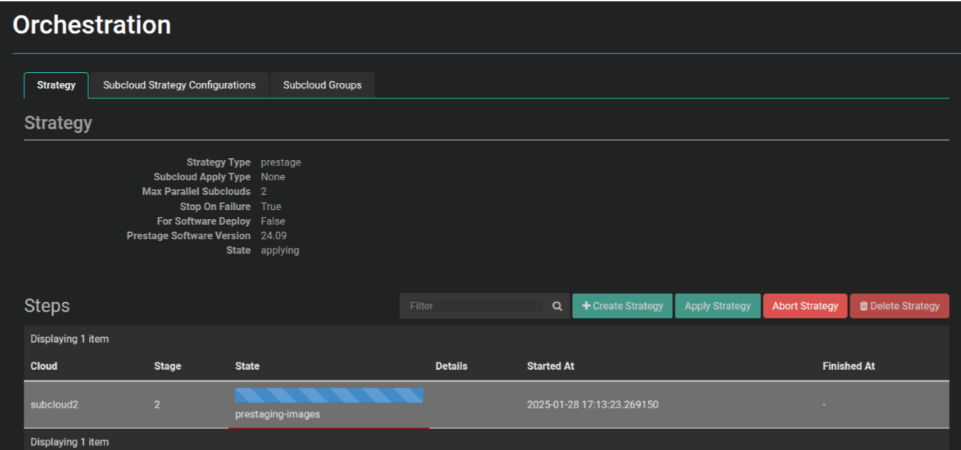
Delete the strategy.
Once the strategy status is either complete, aborted or failed, the strategy can be deleted clicking on Delete Strategy.
